I buy cut gladiolus every Spring Festival. I can also grow them into potted plants and buy some bulbs to reproduce them.
During the Chinese New Year, many friends will place some fresh flower arrangements at home, including the common roses, Australian wintersweets, pussy willows, chrysanthemums, etc. , as well as the gladiolus that I will introduce today , which is also called gladiolus , and it has the good intention of rising step by step.
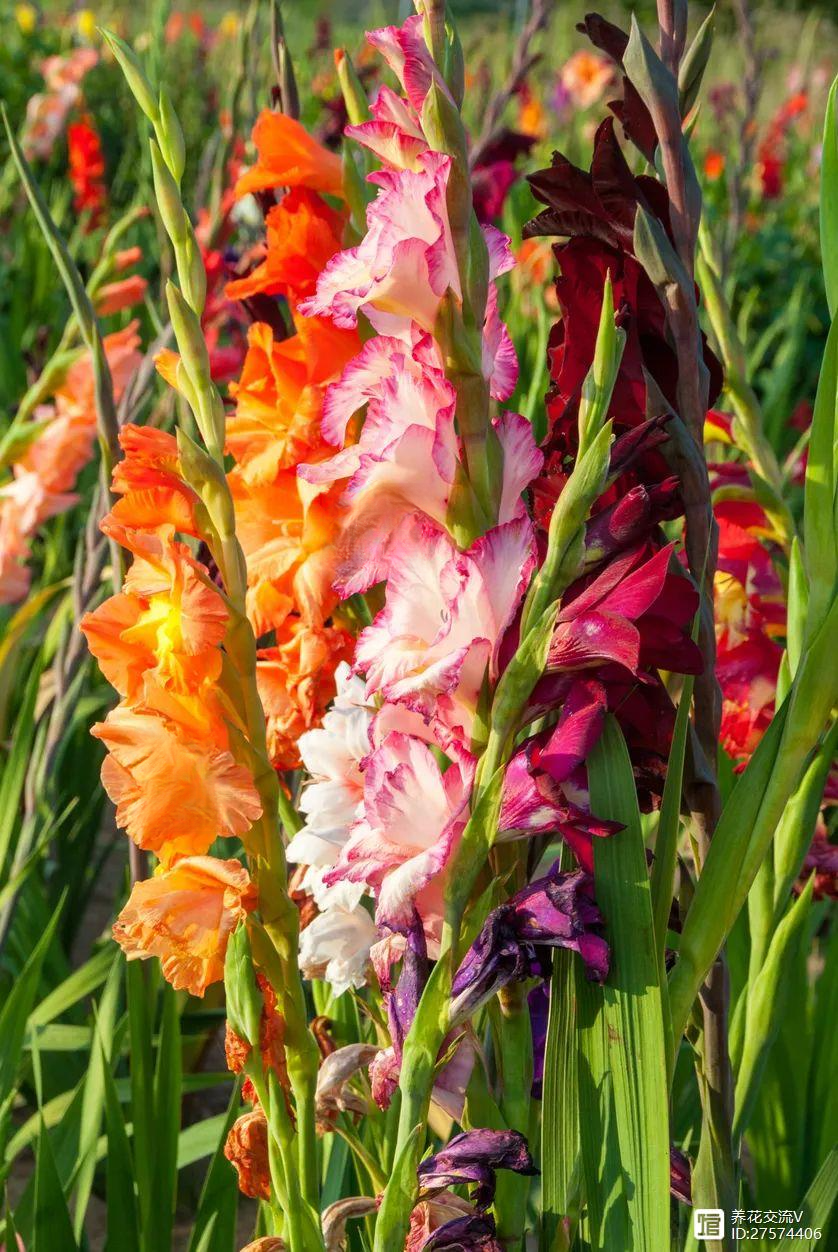
Gladiolus is quite popular around the Spring Festival, especially in Hong Kong, Guangdong and Taiwan.
The reason why gladiolus has this name is because its leaves are sword-shaped, and plants with long and narrow leaves are usually named "such and such orchid", so it is called "gladiolus".
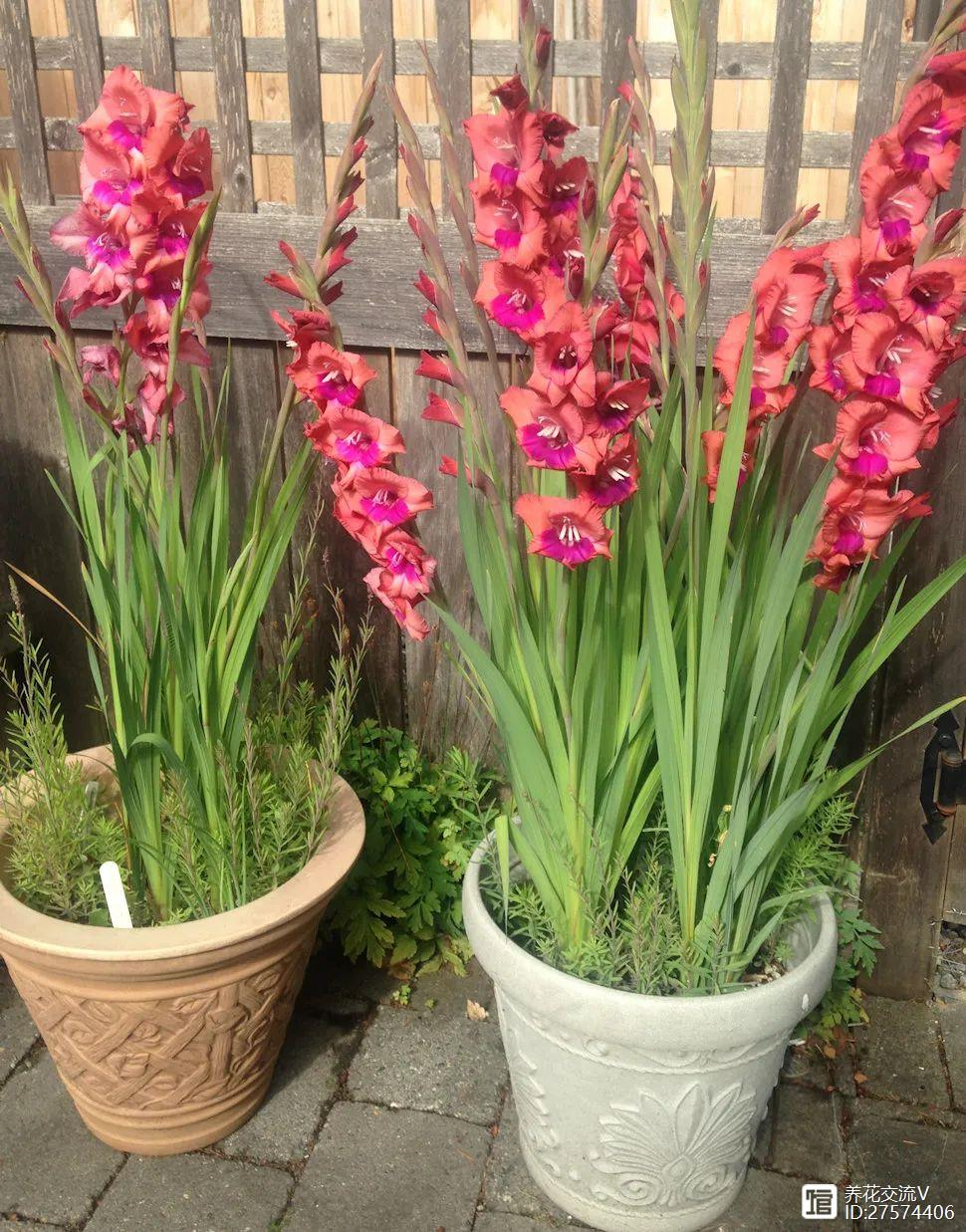
Gladiolus is a perennial bulbous plant of the genus Gladiolus in the family Iridaceae. It originally grew in the Mediterranean region, but has now become a popular ornamental flower around the world. It is particularly suitable for making cut flowers (fresh flowers). There are now many hybrid varieties of gladiolus.
1. Planting time
Gladiolus is usually planted in the south in autumn from September to October (in temperate regions it is planted in spring and is a variety that blooms in summer and autumn). The varieties planted in autumn will bloom brilliantly around the Spring Festival.
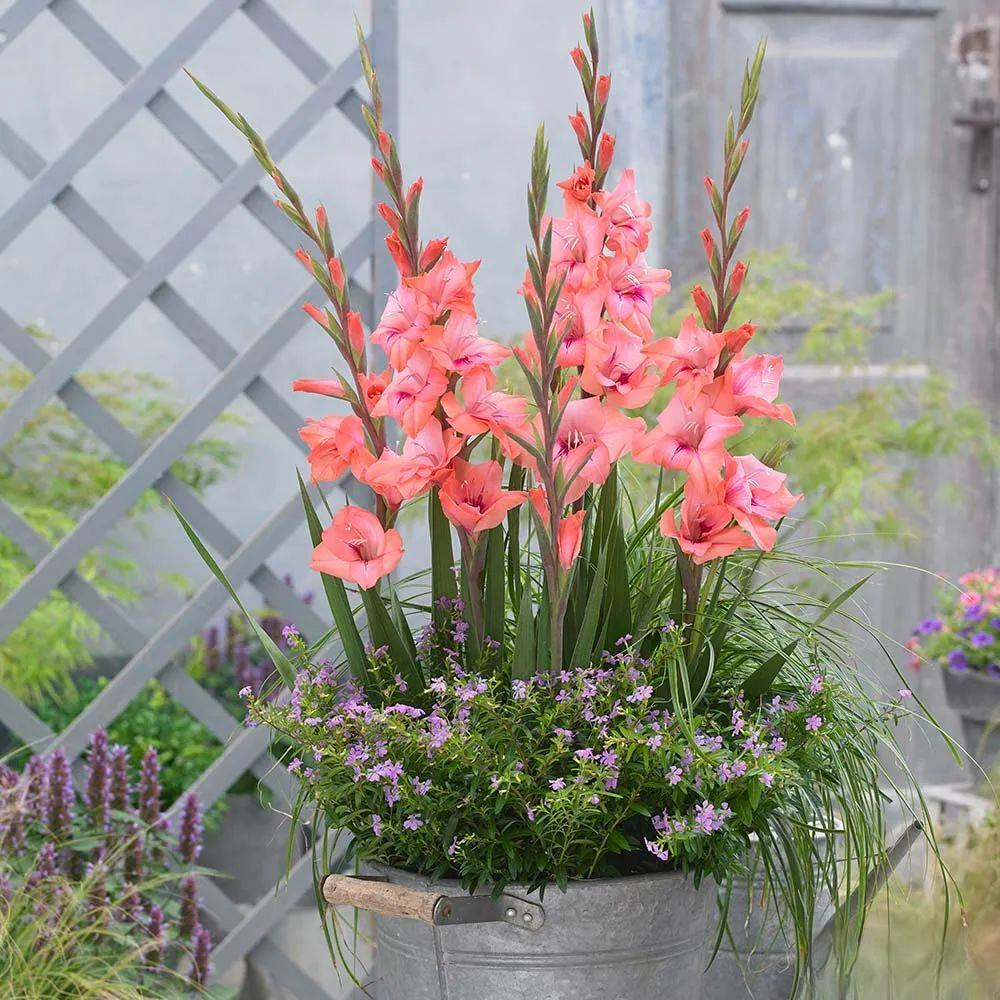
In addition to the common "cut flower" gladiolus with taller flower stems and more flowers, there are now some "mini gladiolus" varieties with smaller plants and shorter heights, which are more suitable for potted planting.
Caring for gladiolus is also relatively simple. As long as the environment is suitable, it can bloom again every year.
I would also like to remind everyone here that it reproduces by the bulbs and bulblets at the bottom of the rhizome. Normally, if we want to plant gladiolus, we can directly buy some gladiolus bulbs in the market and plant them in autumn.
2. Different Gladiolus Varieties in North and South China
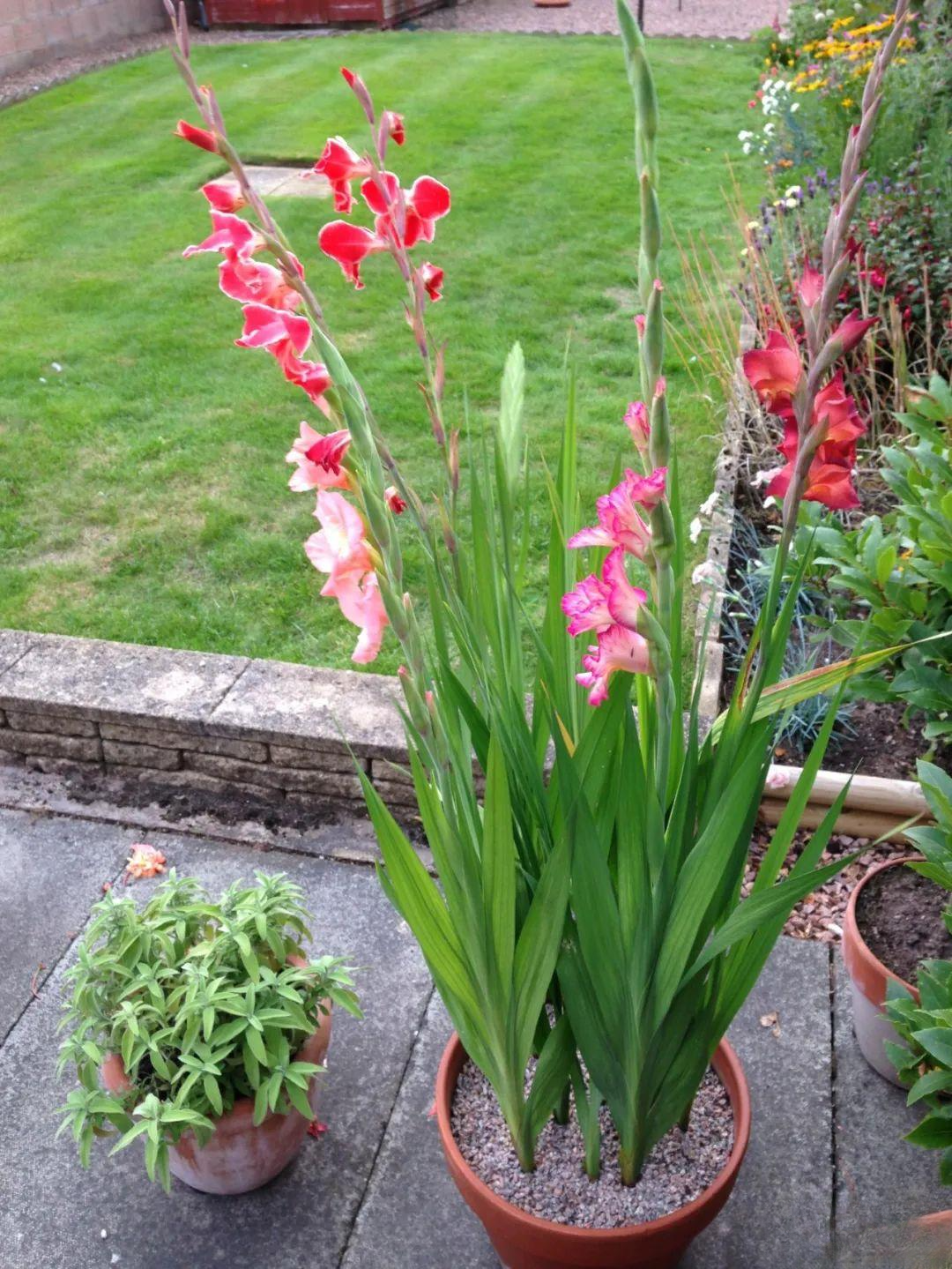
Of course, now that autumn has passed, you can directly buy some potted gladioluses to maintain, and they will continue to bloom around the Spring Festival.
Flower lovers in temperate regions can plant in spring, but be sure to choose varieties that bloom in summer and autumn.
Some gladiolus varieties bloom about 60 to 80 days after planting. These varieties are generally planted in spring in temperate regions.
The varieties planted in autumn will generally bloom after about 120 to 140 days and are suitable for friends in the south.
Notice:
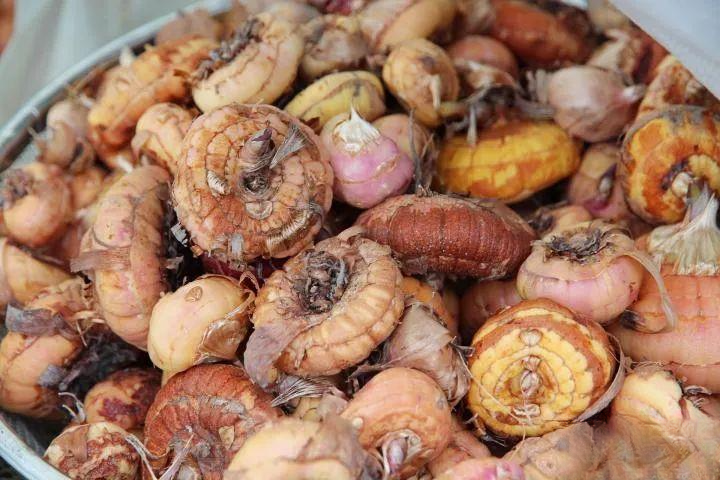
Above is the bulb of gladiolus
If the bulbs of the gladiolus you bought are very small, they are "sub-bulbs". When planted in the first year, they usually only grow leaves but no flowers. In the second year, its bulbs grow fuller.
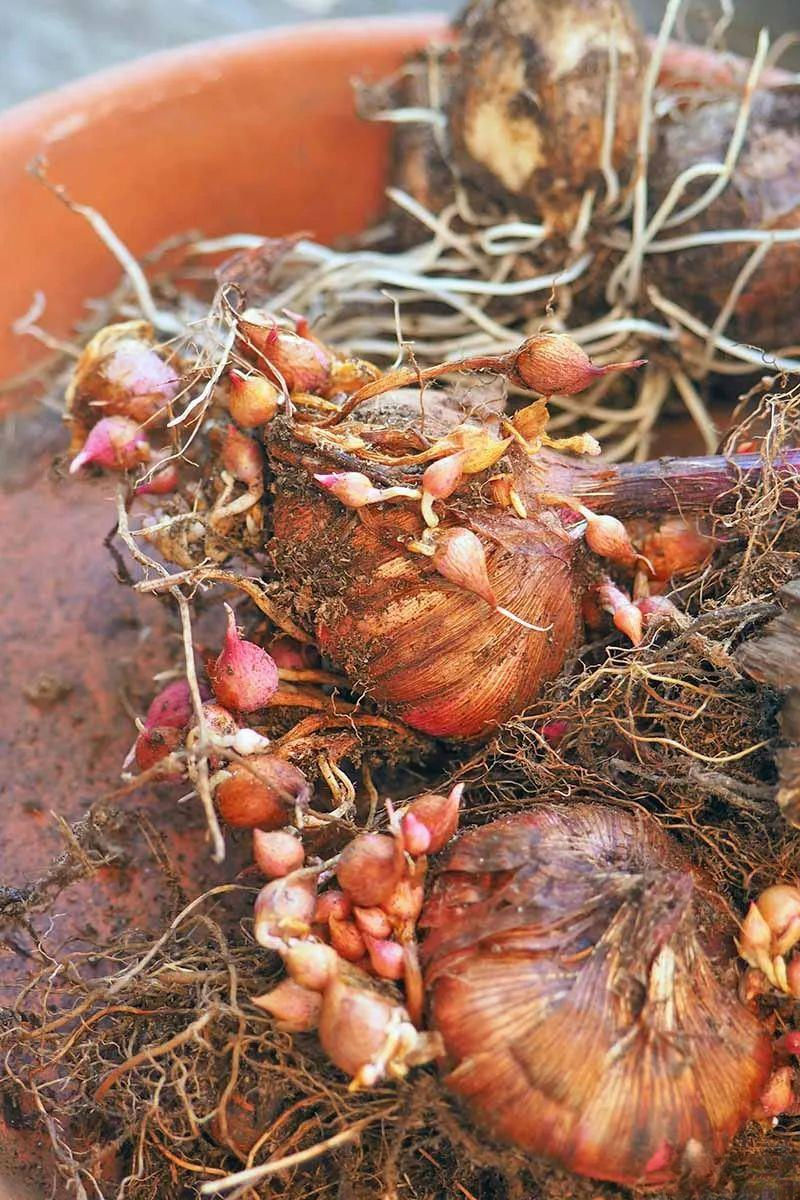
Above are the bulbs and bulbs of gladiolus
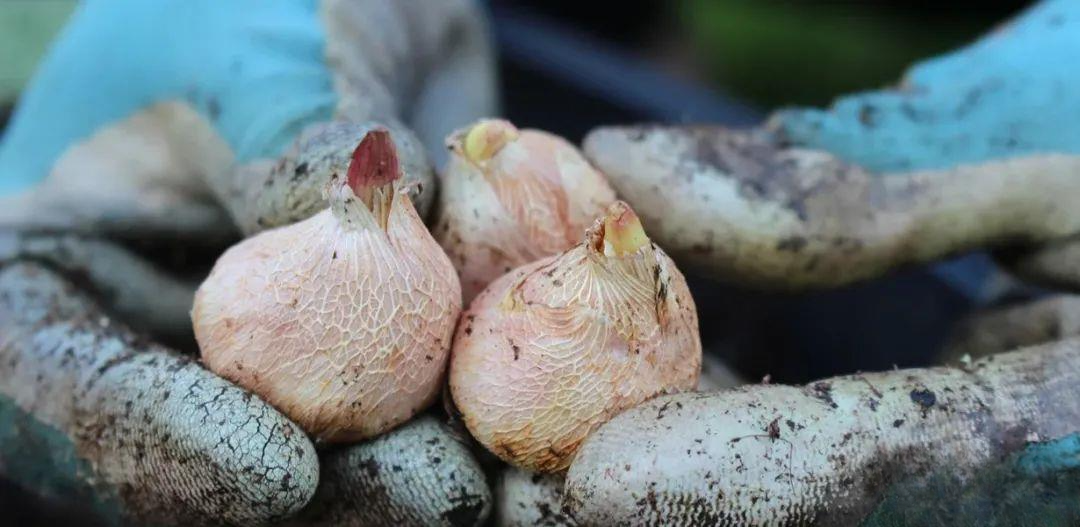
The above is a small ball of gladiolus
You can replant it in the fall and it will grow flower stems, but you need to remove them early, otherwise it will lose too much nutrients and may not bloom in the third year. Wait until its bulbs grow up before it can properly produce flowers. So it is recommended that you buy larger bulbs at the beginning.
3. How to extend the flowering period of fresh cut flowers?
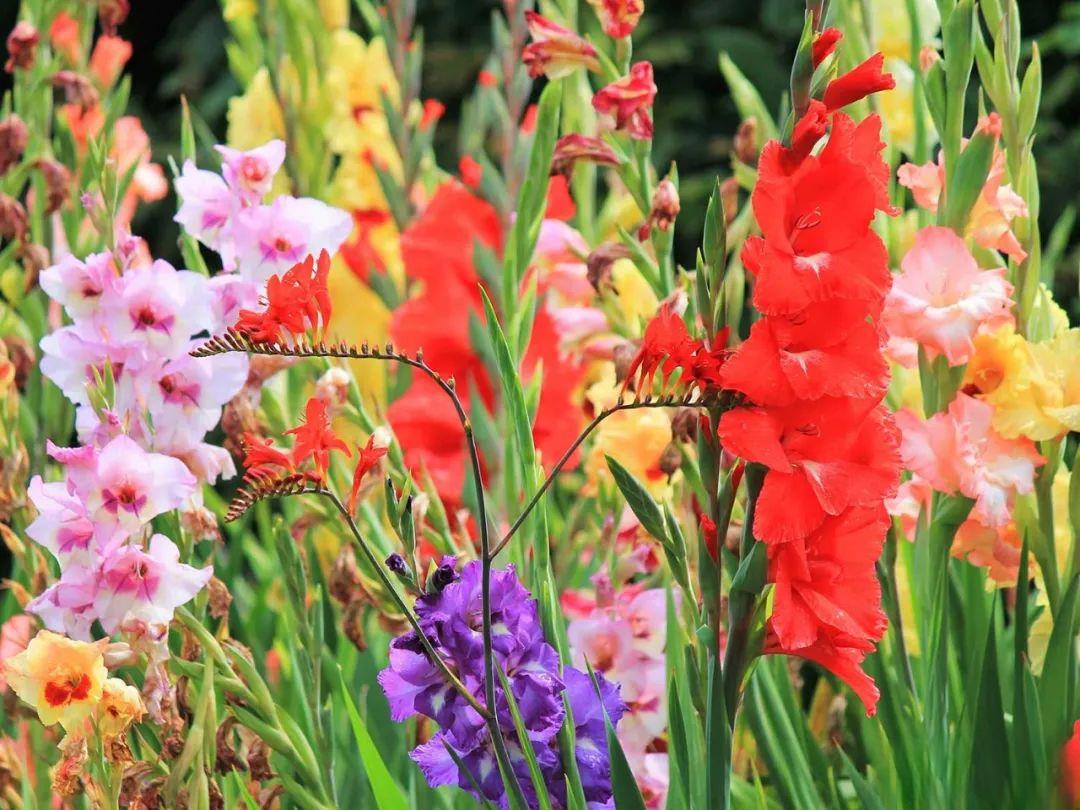
We can also directly buy cut gladiolus flowers during the Spring Festival every year, put them in a vase, and enjoy them for a long time.
Just be sure to change the water every one or two days, and trim the base of the branches every time you change the water. Avoid placing it in an overly warm place, away from air conditioners or heaters, to extend the flowering period.
4. Post-flowering treatment methods
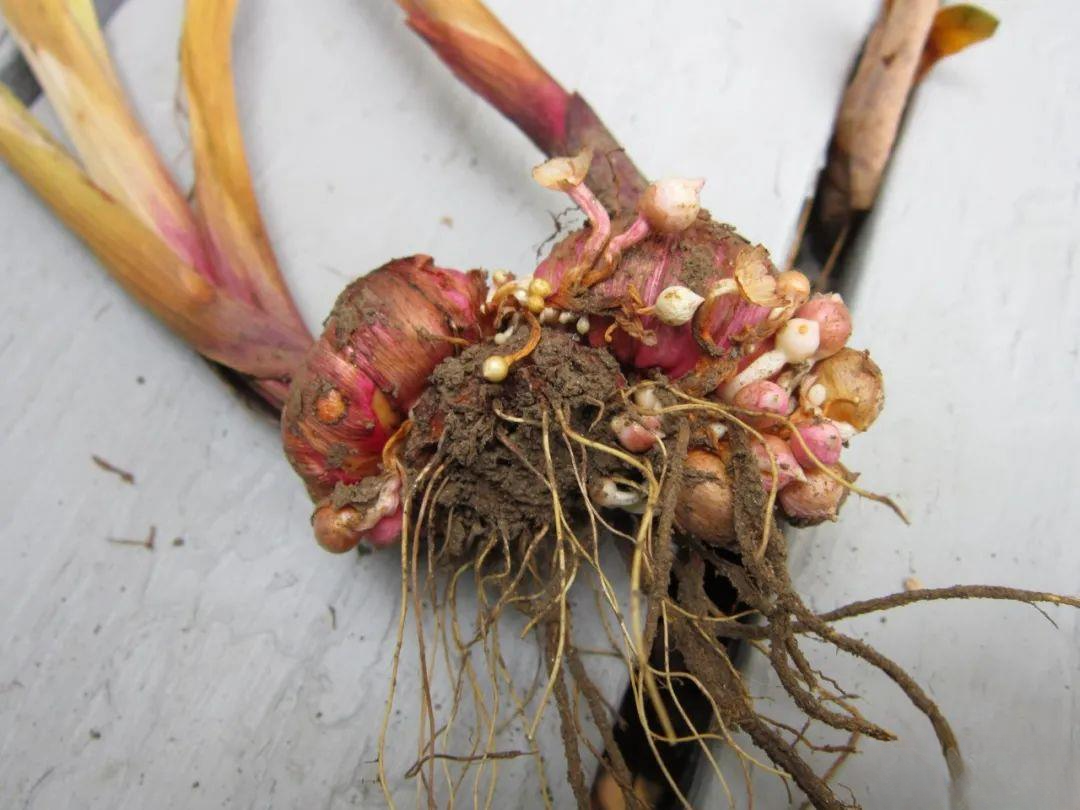
Normally, it is relatively simple for us to propagate gladiolus. After the flowers have bloomed, the leaves should be kept and the withered flowers should be cut off. The leaves will slowly turn yellow and wither in late spring and summer, and then you should stop watering. After the leaves have completely withered, you can remove the withered stems and leaves, and then you can dig up the bulbs and sub-bulbs at the bottom.
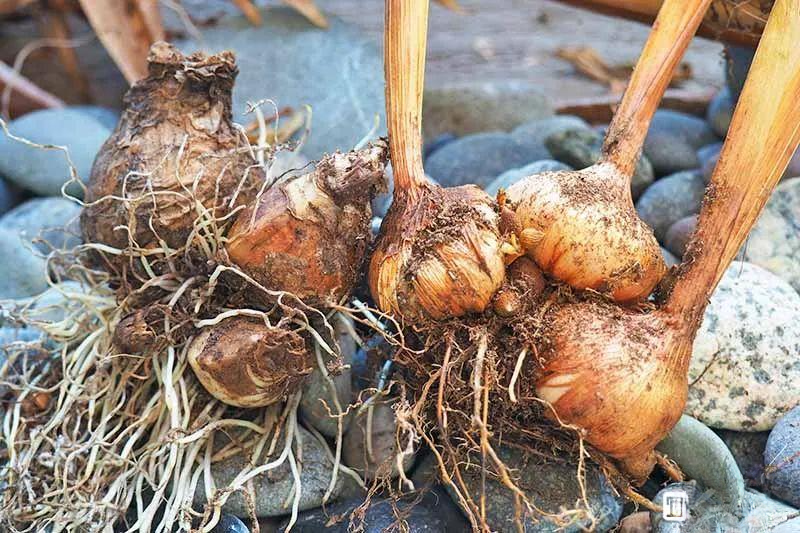
Remove the soil on the surface of the bulbs, dry them in the sun, and store them in a dry, cool and dark place. They should be stored in a low temperature environment of 2 to 4 degrees to allow the bulbs to enter a dormant state. They are usually stored directly in paper bags, or wrapped in newspapers and placed in the refrigerator. When the weather is cool in autumn, they can be taken out and planted again.
5. Processing of purchased bulbs
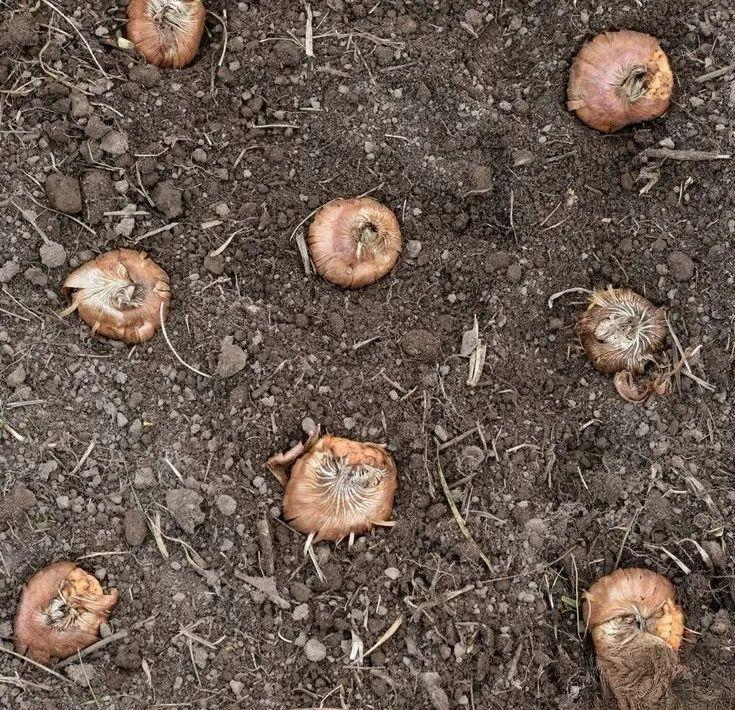
In autumn, the dormant bulbs must be broken before they can be cultivated again. Generally, the gladiolus bulbs are placed in clean water at 30 degrees and soaked for about two days. The water should be changed once or twice a day. Then the healthy and plump bulbs are placed in a solution of carbendazim and soaked for 20 to 30 minutes before they can be cultivated again.
When the temperature drops to between 10 and 25 degrees in autumn, you can start planting. You can bury enough decomposed sheep manure or decomposed earthworm manure at the bottom of the flowerpot, or you can use slow-release fertilizer instead.
6. Precautions for potting
Before planting the gladiolus bulbs, you can water the soil a little. The soil in the pot should not be too moist, but slightly moist.
If the gladiolus bulbs are planted in spring, that is, the bulb varieties that will bloom after 60 to 80 days, they can be buried about 5 to 10 centimeters below the soil.
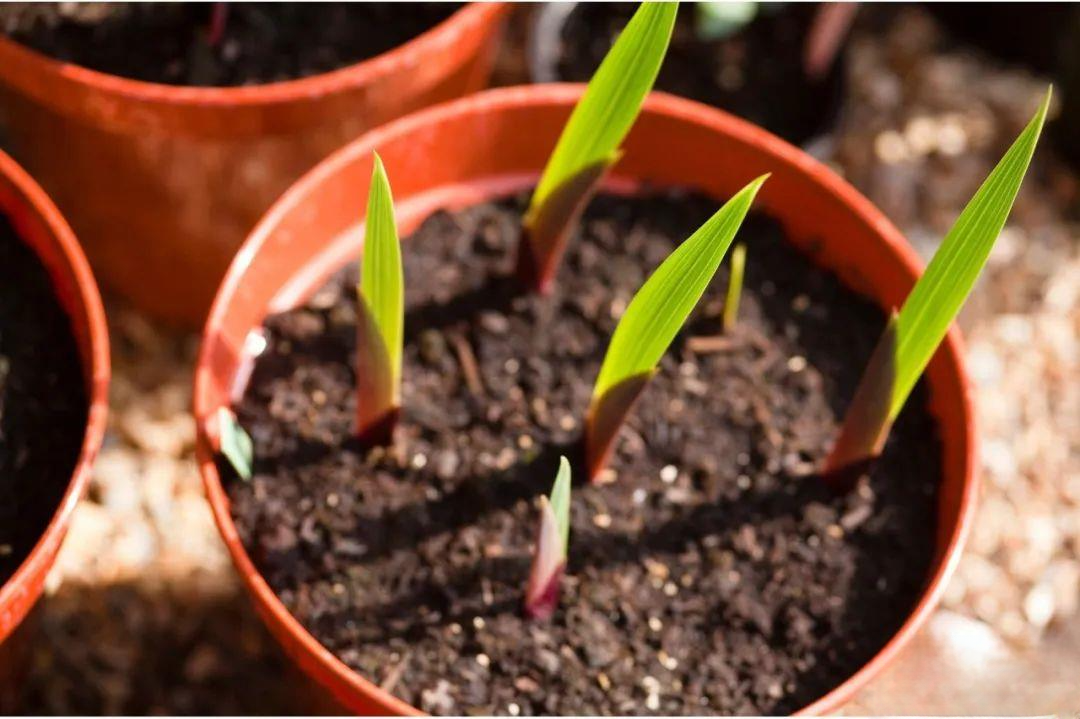
If you are planting gladiolus in autumn, its bulbs should be buried about 10 to 15 centimeters under the soil, ensuring that each bulb has appropriate spacing to allow them enough space to grow.
After the gladiolus bulbs are planted, you can water them thoroughly once and place them in a ventilated and well-lit place. After the small buds grow out, gradually expose them to light. When the small buds grow strong, they can be given full sun.
7. Daily care of gladiolus
1. Provide sufficient light
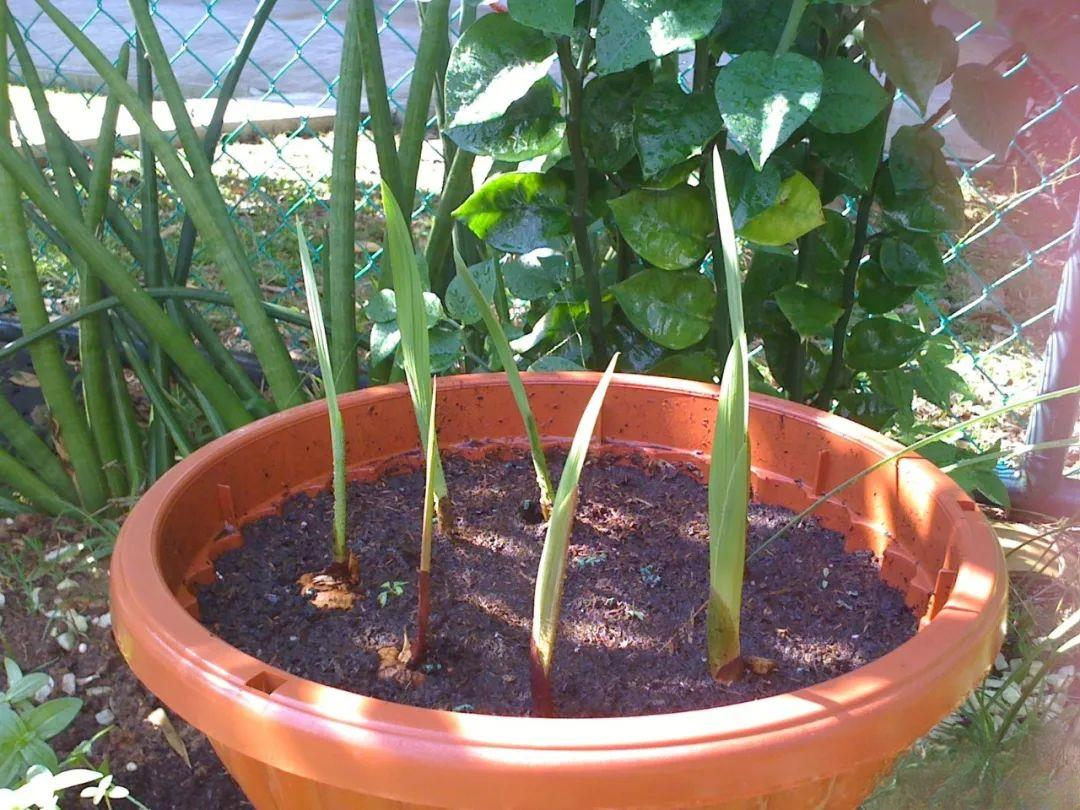
Above is a potted gladiolus
When caring for potted gladiolus, you must ensure that there is as much light as possible. It is best to maintain a full-sun environment with more than 12 to 14 hours of light a day, which will better promote the growth of flower buds.
A friend asked me before, can gladiolus tolerate high temperature exposure? In fact, it depends on the environment. If the humidity is high, the ventilation is good, and the water can be replenished in time, it can tolerate a moderate high temperature environment.
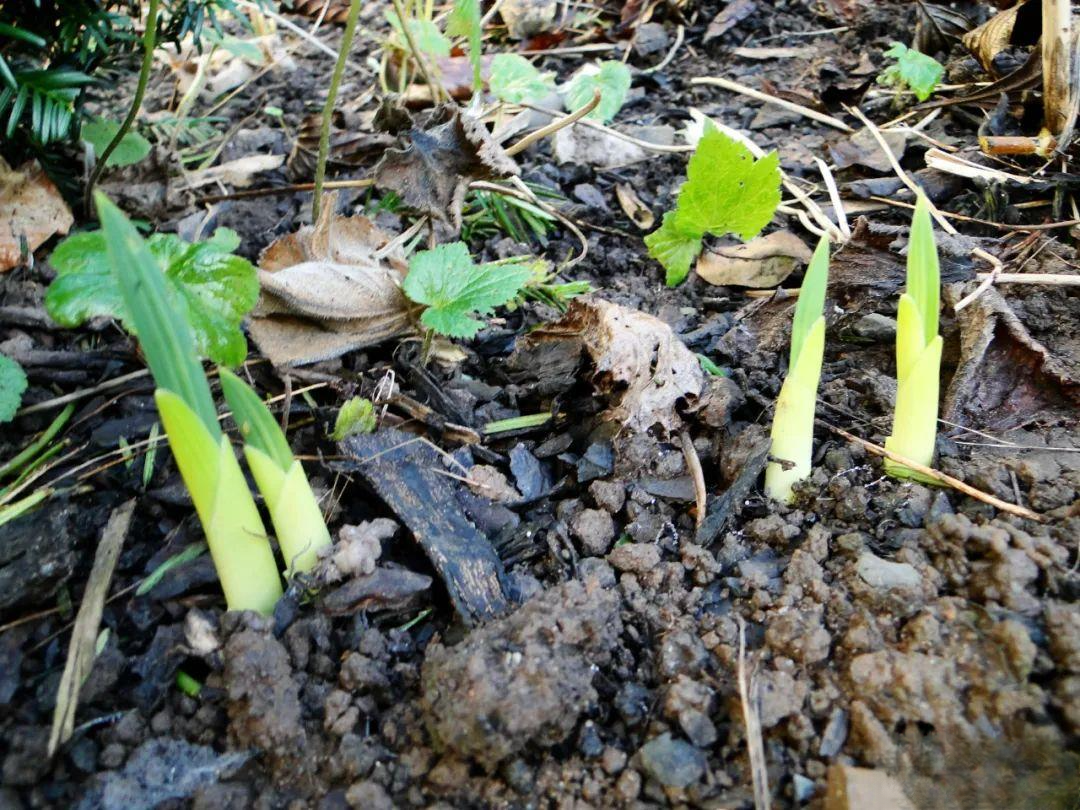
Above is the ground-planted gladiolus
However, if the soil in the pot is too dry or the ventilation environment does not meet the requirements, it will be difficult for them to bloom, and may even cause the plants to wither and grow poorly.
2. Ambient temperature for maintenance
In temperate regions, where the summer is not particularly hot, you can choose gladiolus varieties that bloom in 60 to 80 days. They are planted in the spring (when the temperature is between 18 and 25 degrees), and can bloom in the summer and autumn seasons. In the winter, when the light time becomes shorter and the temperature begins to drop, they will enter a dormant state.
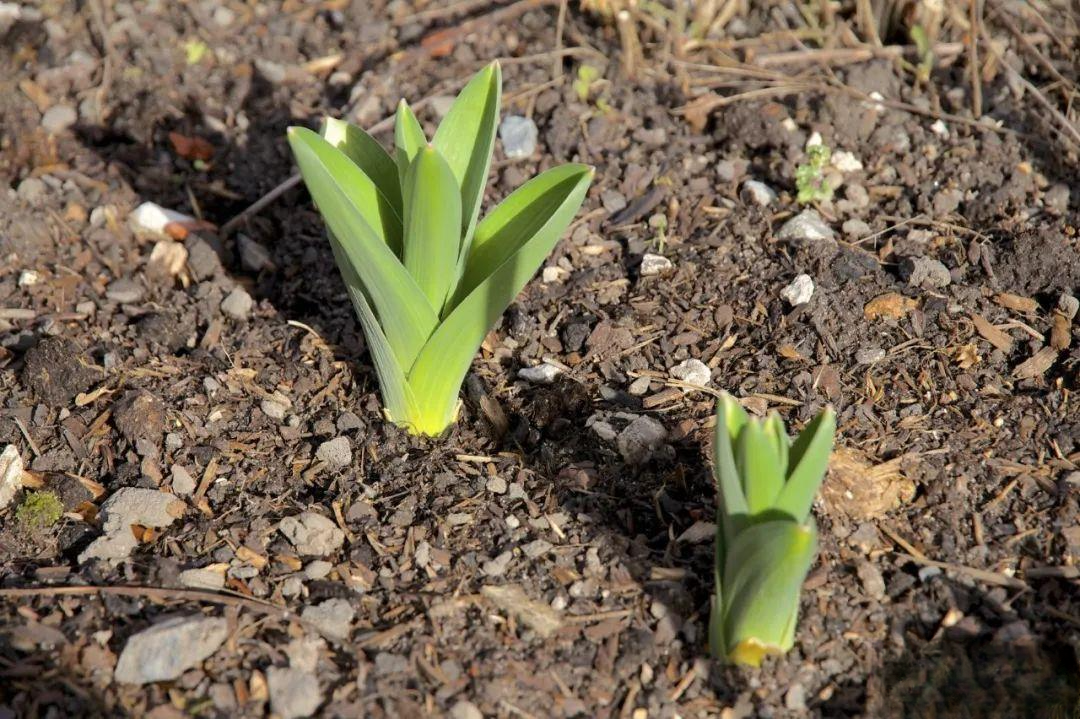
The growth temperature of gladiolus should be maintained between 20 and 25 degrees, and the night temperature should be maintained at around 12 to 18 degrees. Avoid low temperatures. Once the temperature drops below 4 degrees, it will basically stop growing. If the temperature is below minus 2 degrees, it will basically freeze.
3. Note on potting soil and watering
When caring for gladiolus, you must give them plenty of water and ensure that the soil is loose and breathable. The roots cannot be soaked in water, otherwise it will easily cause root rot. Use some soil rich in humus and with good drainage to plant them. You can use ordinary garden soil, mixed with leaf mold and coarse sand, mixed in a ratio of 5:3:2.
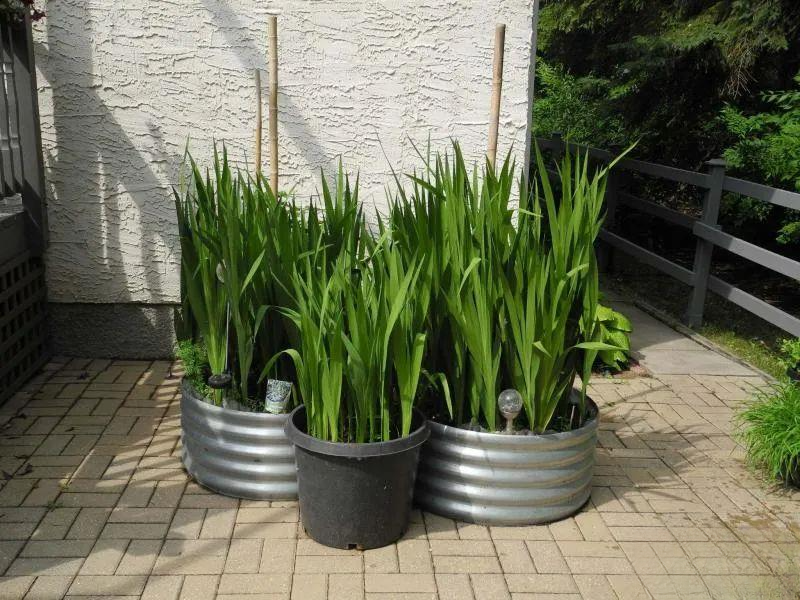
When watering the gladiolus potted plants, you must wait until the soil surface is dry before watering. When the weather is good, you should water it once or twice a day. The method is to dig up the topsoil and take a look before watering. If the soil below is dry, water it in time.
4. Give more organic fertilizer
When caring for gladiolus, you should pay attention to adding fertilizer in time. Generally, you should add decomposed organic fertilizer once a month, or use dilute organic liquid fertilizer as topdressing.
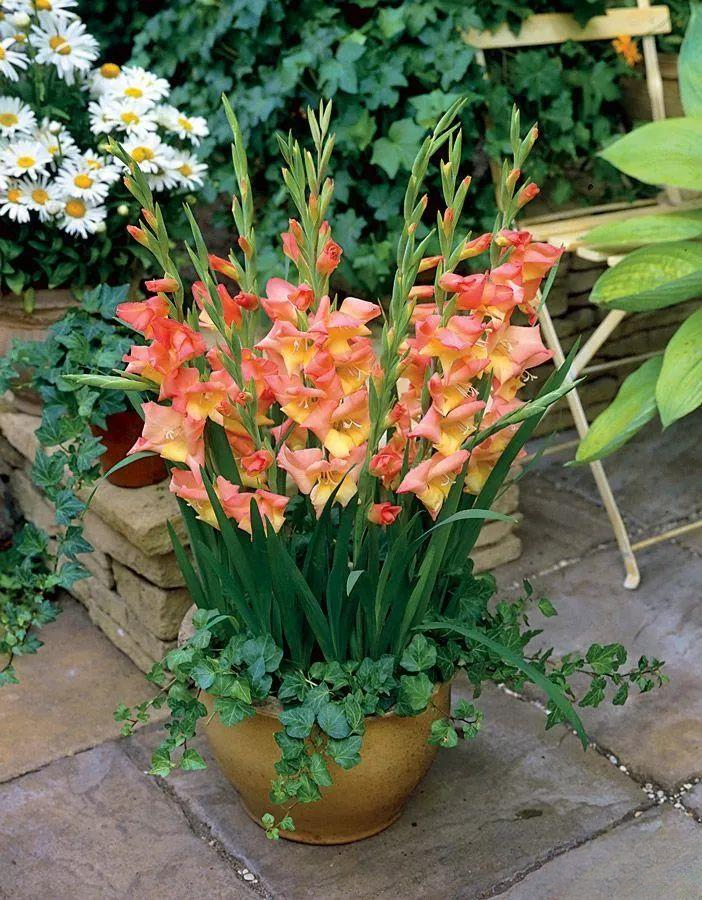
Potted gladiolus with hanging ivy
One thing I want to remind everyone is that gladiolus is particularly sensitive to chlorine and salt in the soil. If you use tap water to replenish it, it is recommended to use a container filled with tap water and leave it for two or three days before use. It is best to use organic fertilizer for normal fertilizer application, and keep the fertilizer thin and apply less (use less chemical fertilizer).
If the bulbs are not big enough, you can occasionally add phosphorus and potassium during its growth season. When it is ready to germinate, you can add potassium dihydrogen phosphate solution every 7 to 10 days.